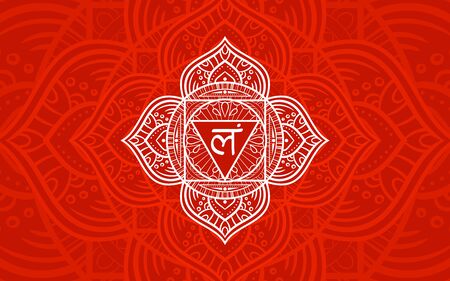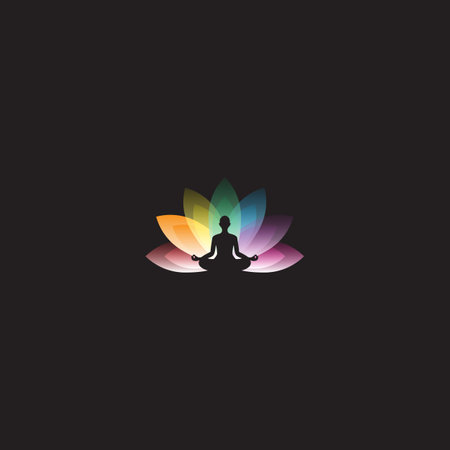Introduction to Vastu and its Significance in Indian Culture
Vastu Shastra, often referred to simply as Vastu, is an ancient Indian science of architecture and spatial arrangement that traces its origins to the Vedic period. Rooted deeply in the spiritual ethos of India, Vastu has guided the construction of homes, temples, and community spaces for centuries. It is based on the harmonious alignment of natural elements—earth, water, fire, air, and space—to promote health, prosperity, and spiritual well-being. In traditional Indian households, adherence to Vastu principles is considered essential for ensuring a balanced environment that nurtures both body and mind. Today, even as urban lifestyles evolve and contemporary designs gain popularity, the relevance of Vastu endures. Many modern Indian homes and spiritual spaces such as meditation rooms and yoga studios consciously incorporate Vastu guidelines to foster inner peace and holistic growth. The role of colours in Vastu is particularly significant; they are believed to influence mental states and energy levels, making them integral to practices like meditation and yoga. Understanding the roots of Vastu helps us appreciate its continued importance in creating spaces that support not just physical comfort but also mental harmony—a value that resonates strongly in Indian culture.
Concepts of Colour in Vastu
Vastu Shastra, an ancient Indian science of architecture and spatial harmony, places significant emphasis on colours and their subtle influences on the human mind and spirit. In the Indian context, colours are not merely decorative elements but carriers of spiritual energy that can shape our moods, thoughts, and even the success of meditation or yoga practices. Each colour is associated with specific directions, energies, and intentions in Vastu, making mindful colour selection a vital part of daily rituals for mental peace.
Spiritual Meaning of Vastu Colours
According to Vastu, every colour has its unique vibration and resonance, directly impacting ones emotional well-being and spiritual awareness. Understanding these meanings helps in consciously designing spaces for meditation and yoga that promote tranquillity and positivity. The table below outlines major Vastu-approved colours along with their prescribed spiritual effects in everyday Indian life:
| Colour | Vastu Direction | Spiritual Significance | Daily Practice Application |
|---|---|---|---|
| White | North-West | Purity, clarity, peace; calms the mind for deeper meditation. | Ideal for meditation rooms; enhances focus during prayer. |
| Blue | West | Healing, calmness; fosters self-expression and inner balance. | Recommended for yoga studios; supports pranayama sessions. |
| Green | North | Growth, harmony; symbolises new beginnings and rejuvenation. | Use in study areas or near plants to refresh energy flow. |
| Yellow | East | Enlightenment, optimism; stimulates intellect and positivity. | Suitable for morning meditation corners facing sunrise. |
| Red/Orange | South-East | Dynamism, vitality; invokes strength and motivation. | Add as accents in yoga spaces to energise practice. |
| Purple/Violet | South-West | Spirituality, intuition; deepens meditative states. | Sacred altar backgrounds or chanting zones benefit from this shade. |
Cultural Sensitivity in Colour Usage
The daily use of these colours is often intertwined with Indian traditions—such as wearing white during pujas or incorporating saffron (orange) in religious ceremonies. When applied thoughtfully according to Vastu principles, these colours can transform ordinary spaces into sanctuaries that support meditation, yoga, and lasting inner peace for families across India.

3. Vastu Colours for Meditation Rooms
When designing a meditation room in line with Vastu Shastra, the choice of colours plays a crucial role in nurturing inner peace and spiritual growth. Indian traditions emphasise that colours deeply influence energy flow, mood, and concentration, making it vital to select hues that are both spiritually aligned and culturally resonant.
Recommended Colour Schemes for Meditation Spaces
White and Off-White Shades
White represents purity, tranquillity, and spiritual elevation in many Indian philosophies. Using white or off-white on walls and ceilings creates a serene backdrop that calms the mind and encourages introspection. These shades reflect natural light well, expanding the sense of space and inviting positive vibrations.
Soft Blues and Light Greens
Light blue is associated with calmness and emotional balance according to Vastu. It helps reduce stress and supports deep breathing during meditation or yoga practice. Similarly, gentle green tones symbolise harmony with nature, fostering healing and renewal. These colours are especially suitable for those seeking solace from hectic urban life, as they replicate the soothing presence of water bodies and greenery common in Indian landscapes.
Pale Yellows
Pale yellow shades align with the energy of the sun, representing optimism, clarity, and enlightenment—qualities highly valued in Indian spiritual practices like Yoga and Pranayama. Yellow also enhances focus, making it easier to maintain meditative awareness without mental fatigue.
Earthy Neutrals
Incorporating earthy tones such as beige, sand, or muted browns can ground energies within the meditation room. These hues reflect Indias natural terrain while offering a sense of stability and security, which is essential for deeper mindfulness practices.
Cultural Considerations for Comfort
While selecting colours, it is important to consider individual comfort and regional preferences across India. Some may prefer pastel tones influenced by South Indian temples, while others feel more at ease with vibrant yet subdued shades reminiscent of North Indian ashrams. Ultimately, Vastu recommends choosing colour palettes that resonate with personal beliefs while adhering to principles of harmony and positivity.
By thoughtfully applying these Vastu colour recommendations, meditation rooms can become sanctuaries that not only reflect Indian spiritual values but also enhance comfort and sustained peace of mind.
Impact of Vastu Colours in Yoga Spaces
When it comes to the ancient practice of yoga, the environment plays a crucial role in deepening one’s experience and supporting inner transformation. According to Vastu Shastra, an age-old Indian architectural science, colours not only influence the aesthetics of a yoga space but also have a profound effect on energy flow, mood, and mental clarity. Let us analyse how specific colours can enhance yoga practices, with reference to Indian yogic philosophy and lifestyle.
The Connection Between Vastu Colours and Yogic Energy Centres
Indian yogic traditions speak of chakras—energy centres in the body, each associated with specific colours. Aligning the colours of your yoga room with these energies can amplify the benefits of each asana (pose) and pranayama (breath control) technique. For example, blue is linked with the Vishuddha (throat) chakra, encouraging communication and self-expression during meditative chanting or mantra recitation. Similarly, green represents Anahata (heart) chakra, fostering love and compassion—vital aspects for group yoga sessions or family wellness routines commonly found in Indian households.
Practical Application: Choosing Colours for Yoga Spaces
Below is a table showing the recommended Vastu-compliant colours for different directions and their yogic significance:
| Direction | Vastu Colour | Yogic Benefit | Example Usage in India |
|---|---|---|---|
| East | Light Blue/White | Promotes peace & new beginnings; enhances morning Surya Namaskar practice | Ideal for sunrise meditation spaces in homes facing Ganga or open fields |
| North-East (Ishanya) | Yellow/Cream | Stimulates intellect & spiritual growth; supports pranayama & dhyana (meditation) | Favoured in puja rooms or sacred corners in traditional Indian homes |
| South-West | Earthy Browns/Beige | Provides grounding energy; aids restorative yoga and relaxation | Commonly used in rural ashrams or retreat centres for deep rest practices |
| Centre (Brahmasthan) | Pale Green | Balances all energies; suitable for group yoga or family sessions | Popular in community halls or urban apartment complexes hosting group classes |
Cultural Relevance and Integration into Indian Lifestyles
The integration of Vastu colours into yoga spaces resonates deeply with Indian cultural values that prioritise harmony between mind, body, spirit, and environment. Many Indian families design their home yoga corners according to these principles, often consulting Vastu experts before finalising wall colours or floor mats. Urban wellness studios and traditional ashrams alike are embracing this approach to create atmospheres conducive to mindful living—a testament to the enduring wisdom of both Vastu Shastra and yogic science. By choosing appropriate colours based on direction and intended practice, practitioners can truly optimise their daily sadhana (spiritual discipline), resulting in enhanced focus, greater emotional balance, and lasting mental peace.
5. Role of Colour in Achieving Mind Peace
In Indian culture, colours hold significant psychological and emotional power, especially when considered through the lens of Vastu Shastra. The ancient science of Vastu attributes specific energies and vibrations to different colours, which can deeply influence mental well-being and inner peace. For instance, white, often used in meditation spaces, symbolises purity and serenity, fostering a calm environment that helps quieten the mind and reduce stress. Light blue is another recommended colour for yoga rooms as it represents tranquillity and spiritual growth, echoing the peacefulness of a clear sky or flowing river—both highly regarded symbols in Indian tradition.
Vastu also recommends green for its association with harmony and healing; it is believed to balance emotions and promote restful meditation by connecting practitioners to nature’s nurturing energy. Meanwhile, yellow, revered in Indian beliefs as the colour of knowledge and learning, is said to stimulate optimism and clarity of thought during yoga or introspection sessions.
The psychological effects of these Vastu-approved colours are not just rooted in aesthetics but are believed to interact with one’s subtle energies or ‘prana’. According to many Indian philosophies, surrounding oneself with the right hues can uplift mood, dispel negativity, and encourage a steady focus—qualities essential for deep meditation and mindful yoga practice. This integration of colour psychology with traditional wisdom continues to be valued across India, reinforcing how thoughtfully chosen colours can enhance mind peace and overall well-being.
6. Practical Tips for Incorporating Vastu Colours
Integrating Vastu colours into your meditation and yoga routines at home can be both meaningful and transformative, especially when approached with authenticity and respect for Indian traditions. Here are some practical suggestions and real-life examples to help you create a harmonious space that nurtures inner peace and spiritual growth:
Choose the Right Space and Direction
Begin by identifying the ideal area in your home for meditation or yoga. According to Vastu Shastra, the north-east corner (Ishanya) is most auspicious for spiritual practices. Ensure this space receives natural light and feels calm.
Select Appropriate Colour Schemes
For Meditation Spaces
Use light shades of blue or white on walls to promote serenity and mental clarity. In many Indian households, a soft blue chatai or rug is placed in the meditation corner to enhance tranquility.
For Yoga Corners
Opt for earthy greens or gentle yellows to inspire balance and rejuvenation. Green plants such as Tulsi (holy basil) or money plant are often kept nearby to reinforce positive energy flow.
Incorporate Colour Through Décor
If painting walls isn’t feasible, add Vastu-compliant hues through décor items. Use orange or saffron cushions—colours revered by yogis—to boost vitality during pranayama sessions. Hang traditional Madhubani or Warli art featuring calming blues and whites.
Traditional Indian Examples
- In South Indian homes, brass diyas with yellow marigold petals are used to infuse sacredness and optimism into pooja rooms.
- Northern households often use cotton white dupattas as meditation shawls, symbolising purity and peace.
Synchronise Attire with Intentions
Dress in Vastu-friendly colours based on your meditation goal: wear white for peace, green for healing, or orange for awakening spiritual energy—just as many Indian sadhaks do in ashrams.
Rituals & Consistency
Light an agarbatti (incense stick) in a colour-matched holder each morning; let the fragrance and visual harmony anchor your practice. Over time, these subtle yet powerful adjustments can lead to deeper concentration and emotional balance, echoing the ancient wisdom of Vastu across generations.


